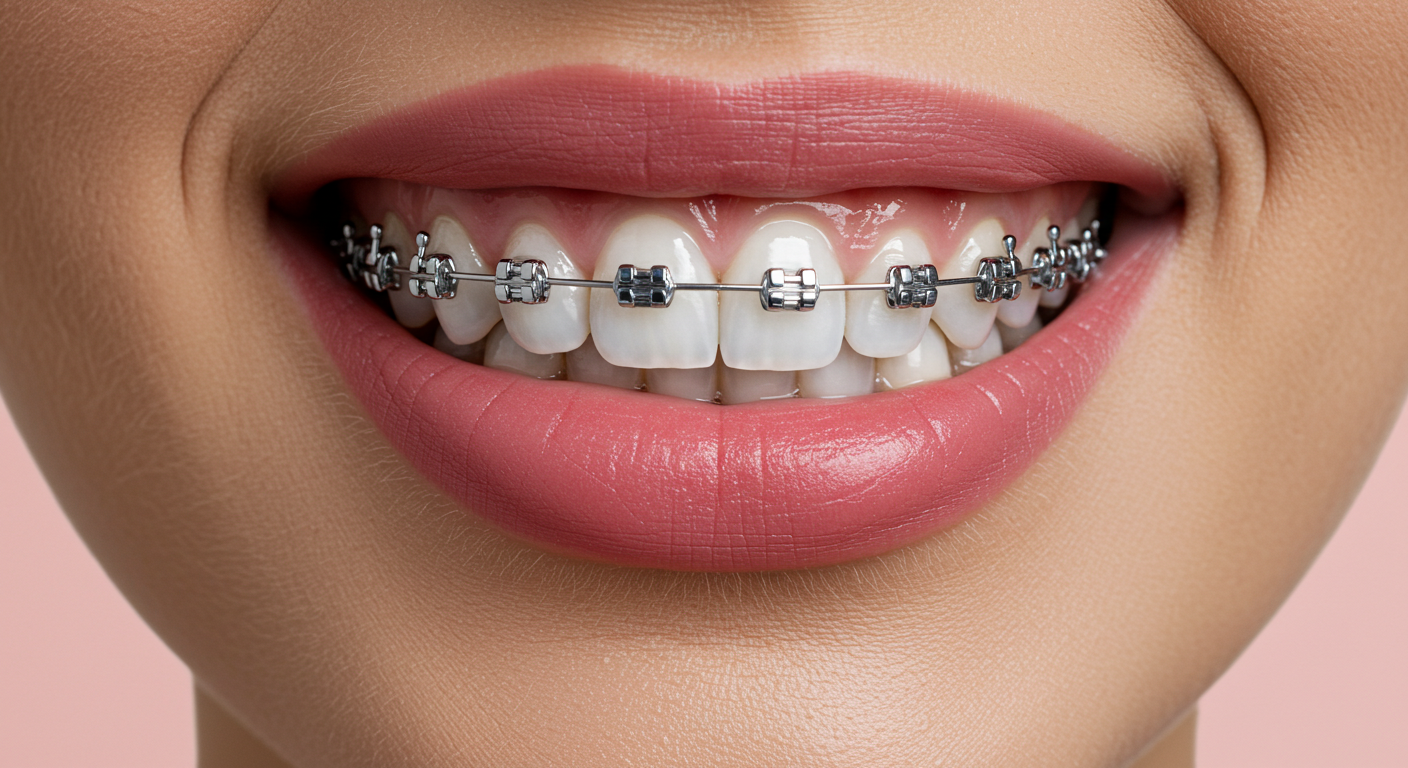
Metal Braces vs. Ceramic Braces: Which Should You Choose?
Cosmetic dentistry today offers a wide range of solutions for correcting teeth alignment. Among these options, dental braces remain a highly effective solution. But when faced with the choice between metal and ceramic braces, which option should you prefer? Let's explore the characteristics of each type of brace to help you make an informed choice.
What Are Dental Braces and What Do They Do?
Dental braces are orthodontic devices used to correct various dental problems. They can be used to:
- Realign crooked or crowded teeth
- Improve the aesthetics of the smile
- Enhance speech and chewing ability
- Correct morphological jaw problems (bite issues)
Please note: The choice between metal and ceramic braces depends on several factors, including the complexity of the treatment and your aesthetic expectations. Your orthodontist will guide you to the solution best suited to your situation.
Metal Braces: The Robust and Effective Standard
Key Features
Metal braces consist of:
- Small metal brackets bonded to the outer surface of the teeth
- A metal archwire connecting the brackets
- Dental elastics (ligatures) to apply the necessary tension
Advantages of Metal Braces
- High strength and durability
- Very reliable bonding
- Fast and precise results
- More affordable cost
- Proven effectiveness for complex cases
Disadvantages of Metal Braces
- Highly visible in the mouth
- An initial adjustment period is necessary
- Requires regular adjustments (typically every 4-8 weeks)
- Less appreciated aesthetic appearance
Ceramic Braces: The Aesthetic Alternative
Key Features
Ceramic braces work on the same principle as metal braces, but are distinguished by:
- Brackets made of clear or tooth-colored ceramic
- A more discreet appearance
- A bonding system similar to metal braces
Advantages of Ceramic Braces
- Increased discretion thanks to their clear or tooth-colored material
- More pleasant aesthetic appearance
- Good effectiveness for most standard cases
- Better social acceptance for adults and teens
Disadvantages of Ceramic Braces
- Higher cost than metal braces
- Brackets can stain with certain foods (e.g., coffee, red wine)
- More fragile than metal braces
- Not recommended for heavy smokers (risk of yellowing)
How to Choose Between the Two Types of Braces
The choice between metal and ceramic braces depends on several factors:
Metal vs. Ceramic Braces: At a Glance
| Feature | Metal Braces | Ceramic Braces |
|---|---|---|
| Aesthetics | Highly visible | Discreet, less noticeable |
| Cost | More affordable | More expensive |
| Durability | Very strong and durable | More brittle, can chip |
| Staining | Brackets do not stain | Clear ligatures can stain |
| Treatment Speed | Often faster, especially in complex cases | May be slightly slower due to friction |
| Best For | All cases, especially complex ones; budget-conscious patients | Aesthetically-conscious patients with mild to moderate cases |
Conclusion
The choice between metal and ceramic braces is a personal decision that should be made in consultation with your orthodontist. While metal braces offer robustness and efficiency at a lower cost, ceramic braces appeal with their discretion. The key is to choose the solution that best meets your specific needs, taking into account the complexity of your case, your aesthetic expectations, and your budget.